Sculpture – Definition, Characteristics, Concept and Evolution
Contents
What is sculpture?
For thousands of years sculpture, being also works of art, has filled the spirit of human life. Thus, the earliest sculpture was probably made to provide magical aid to hunters. Then in the beginnings of civilization, statues were used to represent the gods. Likewise, ancient kings, possibly in the hope of becoming immortal, had carvings and sculptures of their likeness.
Similarly, the Greeks made statues showing perfectly formed men and women. Thus, early Christians decorated churches with demons and devils, reminders of the presence of evil for the many parishioners who could neither read nor write. From its beginnings to the present day, sculpture has been largely monumental. Similarly, in the 15th century, monuments to biblical heroes were built in the streets of Italian cities, and later, in the 20th century, a monument to a composer was built in the heart of New York City.
In this sense, in sculpture as art, the design and realization of large fountains with sculptures in the center that have been commonplace next to modern skyscrapers and in the courts of ancient palaces has predominated. Similarly, the ancient Sumerians celebrated military victory with sculpture, as well as the participants of World War II also used sculpture to honor their soldiers.
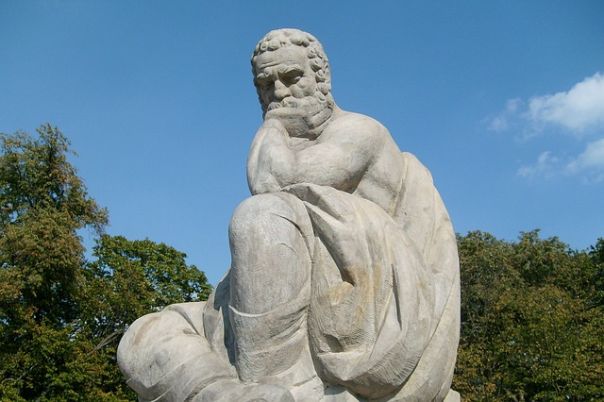
History of Sculpture
Sculpture may be the oldest of the arts, since people carved before they painted or designed their homes. The earliest drawings were probably carved in rock or incised (scratched) into the earth. Therefore, these drawings were the forerunners of relief sculpture and also the beginning of painting. Similarly, only a few objects survived to show what sculpture was like thousands of years ago. However, there are hundreds of recent examples of sculpture made by people living in primitive cultures. These examples are believed to be similar to prehistoric sculpture. Therefore, from recent primitive sculpture and from the few surviving prehistoric pieces, it can be judged that prehistoric sculpture was never meant to be beautiful. Thus, sculpture was always made to be used in rituals. Consequently, due to the constant human struggle for survival, primitive people made sculptures to provide spiritual support.
In this sense, figures of men, women and animals, as well as the combination of all these served to honor the strange and sometimes terrifying forces of nature, which were worshipped as evil or good spirits. Strange shaped figures must have represented prayers for strong children, good crops and abundant game and fish. Sculpture in the form of masks was used by priests or medicine men in dances designed to drive out evil spirits or ask favors from good ones.
Stages of Sculpture
Throughout history, sculpture has always been a landmark, it has had evolution and an important development, you can see the different stages of sculpture:
Sculpture in the ancient world
Early civilizations in Egypt, Mesopotamia, the Indus Valley and China gradually developed forms of writing around 3000 BC. The people of these civilizations, like their prehistoric ancestors, also expressed deeply felt beliefs in sculpture.
Egyptian Sculpture
Egypt and all Egyptian art was based on the belief in an afterlife. The body of the Egyptian ruler or Pharaoh, was always, carefully preserved, also all his belongings and treasures were buried with him to take care of his needs forever. Likewise, the pyramids, the great monumental tombs of Giza, were built for the most powerful rulers. Likewise, the Pharaoh and his wife were buried in deep-cut chambers within the huge stone blocks.
Moreover, Egyptian sculptors made seated and standing sculptures in round and relief. Hence, the changes in style reveal the change of circumstances. Thus, colossal figures such as those of Ramses II at the entrance to his tomb at Abu-Simbel are large, powerful and demanding. A small portrait of Ramesses II shows the smooth finish, precision craftsmanship and elegance of new united art.
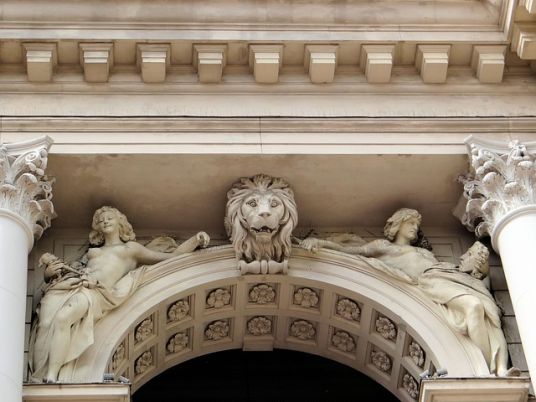
Mesopotamian Sculpture
Mesopotamia, meaning, the land between the rivers, had a much less stable society than Egypt and lacked the large quantities of stone that Egypt had for monumental sculpture. Its cities were often destroyed by floods and invading armies. Therefore, the earliest examples of sculpture in this region were formed from lightweight materials, such as baked and unbaked clay, wood or combinations of wood, shells and gold leaf. Thus, a group of stone figures from Asmar represent the gods, priests and worshippers in a very different way than from Egyptian sculpture. These figures are cone-shaped, with pleated skirts, small heads, huge and prominent noses with large eyes and fixed gaze.
In the same vein, the stone sculptures of the city palaces were heavily fortified like Nineveh, Nimrud, and Khorsabad and reveal the aggressive, warlike character of the conquerors of this region, the Assyrians. At the entrances of the Assyrian palaces were placed huge symbols of the king symbolizing majesty, as well as images in the form of monsters and colossal five-legged guardians with wings and bulls with human heads. Also, stone slabs carved in relief with scenes of hunts, battles, victory banquets, and ceremonial rituals were placed inside the palaces along the lower walls.
Aegean Sculpture
From this civilization only a few examples of sculpture remain from the colorful Minoan civilization on the island of Crete. Similarly sculpted in ivory and terracotta, small statuettes of priestesses and serpent goddesses and acrobats, vases with relief scenes such as a being caught in a net or animated harvesters returning from the fields showing lively suggestions of the Minoans in action. The Lion Gate at Mycenae (circa 1250 BC), with its two huge beasts guarding the entrance to the fortified city, is an exceptional monumental sculpture of this time. The beaten gold mask of Agamemnon is memorable for its suggestion of the great heroes of the Homeric legends. Likewise, the mask that was found with gold cups, daggers, pectorals and other objects in the tombs and sepulchers of the Mycenae axis.
Around 600 B.C., Greece developed one of the greatest civilizations in the history of the world. Sculpture became one of the most important forms of expression for the Greeks. The Greek belief that man is the measure of all things clearly shows what Greek sculpture is all about. The human figure was the main subject of all Greek art. Therefore, sculptors in Greece were constantly looking for better ways to represent the human figure. Therefore, the Greeks developed a standing figure of a naked man, called the Kouros Apollo. The Kouros served to represent gods and heroes. Likewise, the Kore, or standing figure of a draped woman, was more graceful and was used to portray maidens and goddesses. The winged female figure, or Nike, became the personification of victory. A transcendent fact about Greek sculpture is that sculptors concentrated their energies on a limited number of problems which may have helped bring about the rapid changes that occurred in Greek sculpture between the 7th century and the last 4th century BC. Thus, the shift from abstraction to naturalism, from simple to realistic figures, occurred during this period. Thus, later figures have normal proportions as they stand or sit easily in perfectly balanced poses.
Ancient Greek Sculpture
Around 600 B.C., Greece developed one of the greatest civilizations in the history of the world. Sculpture became one of the most important forms of expression for the Greeks. The Greek belief that man is the measure of all things clearly shows what Greek sculpture is all about. The human figure was the main subject of all Greek art. Therefore, sculptors in Greece were constantly looking for better ways to represent the human figure. Therefore, the Greeks developed a standing figure of a naked man, called the Kouros Apollo. The Kouros served to represent gods and heroes. Likewise, the Kore, or standing figure of a draped woman, was more graceful and was used to portray maidens and goddesses. The winged female figure, or Nike, became the personification of victory. A transcendent fact about Greek sculpture is that sculptors concentrated their energies on a limited number of problems which may have helped bring about the rapid changes that occurred in Greek sculpture between the 7th century and the last 4th century BC. Thus, the shift from abstraction to naturalism, from simple to realistic figures, occurred during this period. Thus, later figures have normal proportions as they stand or sit easily in perfectly balanced poses.
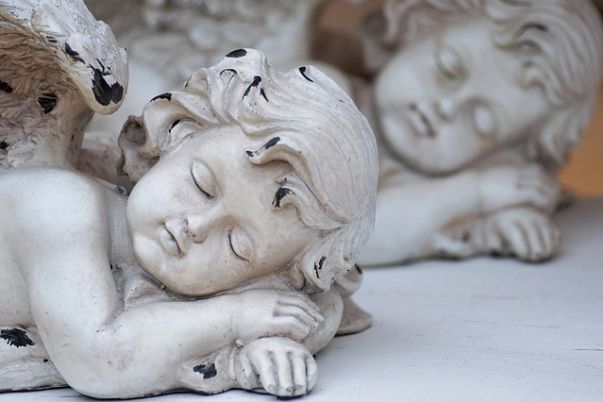
Etruscan and Roman Sculpture
Greek sculpture and art had been exported to Italy long before the Romans ruled the land. By the 7th and 6th centuries B.C. the Etruscans were firmly settled in Italy, so, hundreds of objects have been and still are found in extensive Etruscan cemeteries. Some of the sculptures and many vases are Greek, while others are animated Etruscan translations of Greek form. Many small bronze figures of peasants, warriors or gods demonstrate the great talent of the Etruscans as metalworkers and sculptors. Thus, Rome benefited from the dual artistic heritage of Greek and Etruscan sculpture. Thus, the inventiveness of Roman sculptors were added to this heritage. Likewise, the most important contributions of Roman sculptors were portraits.
Christian Sculpture
The sculpture of this period resembled the art of Rome. Hence the sarcophagi (funerary chests) found in Italy are all Roman in type, although they are given special significance by themes, signs or symbols important to Christians. Sculpture, however, was not a natural form of expression for the early Christians. This was because one of the Ten Commandments forbids the making of images (carving). Thus, many of the early Christians interpreted this commandment, as did the Hebrews, to mean that they considered it wrong to make any image of the human figure. Finally the church authorities decided that this art could serve Christianity. Thus, it was only the making of idols (false gods) that was considered a violation of the commandment.
There are relatively few examples of sculpture made in the first 1,000 years of Christianity. Among these rare examples are portable altars, reliquaries (containers for the remains of Christian saints and martyrs), chalices and other objects used in Christian worship services. These were formed with great care and were often made of precious materials. Thus, sculpting artists used the fragile and beautiful medium of ivory in many ways. There were relief carvings for small altars or as covers for gospels, the Bible or prayer books. Small, freestanding figures depicted the Virgin and Child Jesus, angels, or Saints.
Romanesque Sculpture
A brilliant new chapter in Christian art began after the year 1000. For the next three centuries sculptors, architects, masons, carpenters and hundreds of other craftsmen created some of the most impressive Christian churches ever built.
These artists worked on a grander and bolder scale than had been possible for hundreds of years. Their ideas seemed to be among the best examples of large structures known from Roman buildings. The term “Romanesque” suggests the Romanesque qualities of the art of the 11th and 12th centuries. Thus the Romanesque churches of the Germans differ from the church of the Italians and Spaniards and also of the French. Therefore, the ideas of painting, carving and construction circulated freely, which for people often turned into pilgrimages to worship these sacred places in different countries.
In this sense, an example of Romanesque sculpture from the 11th century shows the Roman way of how ideas were translated. The bronze doors of Hildesheim Cathedral have ten panels with scenes from the Bible. The placement, purpose and arrangement of these doors are clearly reminiscent of the fifth-century doors of Santa Sabina in Rome. But the details are different.
In this regard, the small figures were placed in such a way that they turn and rotate freely. Thus, their heads and hands are enlarged and protrude above the surface of the relief.
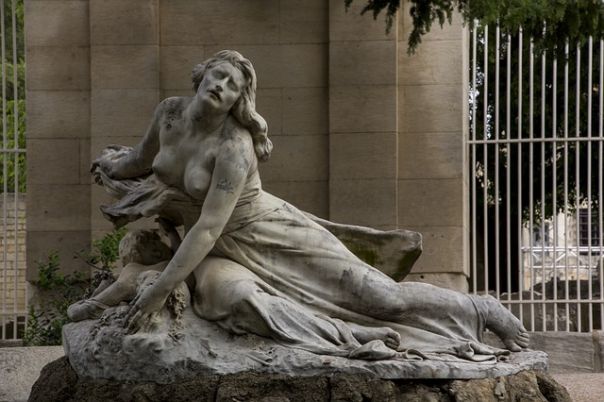
Gothic Sculpture
After the 12th century, sculpture had gradually changed from the clear and concentrated abstractions of Romanesque art to a more natural and realistic appearance. Therefore, human figures in natural proportions were carved in high relief on portals and church columns. As Gothic sculptors became more skilled, they also acquired greater freedom and independence. Later Gothic figures appear much more realistic than those made during the Romanesque and earlier Gothic periods. The faces of the statues have expression, and their robes cover them in a natural way. Hundreds of carvings in the great Gothic cathedrals throughout Western Europe present aspects of the Christian faith in terms that every Christian could understand.
Renaissance Sculpture
On the Mediterranean Sea, the Italian peninsula stands out, at the crossroads of several worlds, which had been the heart of the Roman Empire. Therefore, Rome was the center of the Western Christian world. Later, northeastern Italy, especially Venice, became the gateway to the Near East. Therefore, Italian artists did not fully accept the Gothic styles that dominated art in Western Europe. The reason is that Italian artists were affected by the remnants of the classical age and exposed to the eastern influence of Byzantine art. Thus, as early as the 13th century the Italians planted the seeds of a new era such as the Renaissance. Although elements of Byzantine and medieval art contributed much to the formation of Renaissance sculpture, Italian artists were interested in reviving the classical approach to this art.
Baroque Sculpture
Sculpture in the 17th century continued to be treated with the same wide variety of sculptural problems as its Renaissance predecessors, with the human figure as a form of expression. They reacted, however, against the mannerism of the sculptors of the late sixteenth century. They worked rather for a return to the greater strength of Michelangelo, to the energy and agility of 15th century sculpture. Giovanni Lorenzo Bernini (1598-1680) was, like Michelangelo, a gifted artist of Baroque sculpture. In a long and productive career, he easily became the dominant figure in his country and one of the most important artists in Europe during a brilliant and creative period.
Rococo Sculpture
The basic qualities of 17th century art were carried forward into the 18th century but were transformed for the tastes of a different generation. The term “Rococo” suggests a preference for lighter, more decorative effects in sculpture and in all the arts. Jean Baptiste Pigalle (1714-85) and Étienne Maurice Falconet (1716-91) show the same technical skill as Bernini, but their figures are light and cheerful. The skill in their delicate work, with its small, sweet figures of gentle, graceful movements, represents a remarkable departure from the strong religious intensity of Bernini’s work.
Neoclassical Sculpture
Neoclassical and Romantic sculpture, consolidated in the 18th century, while Clodion (1738-1814) and other Rococo sculptors were still active. This direction, called neoclassical seeks to describe the deliberate return to classical subject matter and style, lasted in strength for nearly a century. The shift can be seen in the work of noted sculptor Jean Antoine Houdon (1741-1828), thus, the statue of George Washington could be likened to a portrait of a Roman emperor.
For its part, the Romantic movement was growing, even though many artists still preferred to work in the classical tradition at the academies. In the 1860s the young sculptor named Auguste Rodin was rejected three times from the École des Beaux-Arts, the Paris Academy. By the end of the century he was the most famous sculptor in France and most of Europe.
20th century sculpture
The 20th century was a time of experimentation with new ideas, new styles and new materials. Studies of the human figure gave rise to new themes such as dreams, ideas, emotions, as well as the study of form and space. Likewise, materials such as plastic, chrome and welded steel were used, as well as boxes, broken automobile parts and old furniture pieces. Likewise, 20th century sculptors owe a great debt to Rodin because of his tremendous output and variety that inspired a new generation of sculptors to express new thoughts in an art form that had been repeating old ideas for 200 years. Although Rodin’s successors tended to move away from his realism and literary themes, his innovations had a very important influence.
Modern and Postmodern Sculpture
Since the 1960s, so-called modern art has been replaced by contemporary art or postmodernism. Unlike the earlier modernist and postmodernist sculptors of today (e.g., Pop artists such as Claes Oldenburg, Robert Indiana and Neo-Pop artists such as Jeff Koons, they do not hesitate to use a wide variety of materials, images and methods of display. However, these styles tend to be more localized, which is why, as a current trend among contemporary art movements, they are wary of the big ideas and internationalism of the 19th and mid-20th century modern art movements.
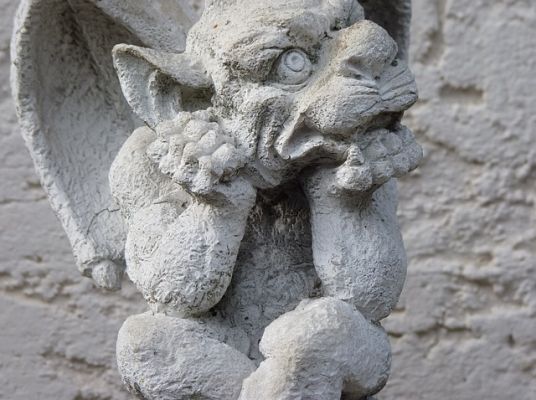
Types of Sculptures
The basic traditional forms of this art of sculpture are:
Exempt Sculpture
It is surrounded on all sides by space.
Relief Sculpture
It is of bas-relief comprising high relief and sunken relief, where the design remains in the background, usually stone or wood. Examples of relief work can be seen in megalithic art, such as the complex spiral engravings found in Newgrange (Ireland). Similarly, Gothic architectural reliefs appear mostly in major European cathedrals of the period: witness the Saints in the south trancept of Chartres Cathedral and the Apostles in the north trancept of Rheims Cathedral.
Column Sculpture
From Trajan in Rome, the temple of Zeus at Olympia and the Parthenon.
They can also be classified by their subject matter, such is the case of the sculptures:
Full length
The two versions of David by Donatello and Michelangelo, usually a three-dimensional portrait of a full-length representation of a person.
Bust
usually represents only the head, neck and shoulders, such is the case of the bust of George Washington (1788) Jean-Antoine Houdon (1741-1828).
Equestrian Sculpture
A statue of a person on horseback, such as Giambologna (1529-1608) by Cosimo de’ Medici in Florence. Perhaps the greatest equestrian statue is Falconet’s Baroque-style bronze horseman in St. Petersburg’s Decembrist Square: a monument to Tsar Peter the Great and a Russian masterpiece of sculpture, albeit created by a Frenchman.
Public Art Sculpture
It is the art of vivid physical presence, it is an ideal form with supreme examples in Western culture being some of the most outstanding monuments: the monumental megalith of Stonehenge, the classic sculptures of the Parthenon in Athens, the Celtic high cross of Ireland and in the twelfth and thirteenth centuries, the Gothic column of statues and reliefs of the cathedrals of northern France and Germany.
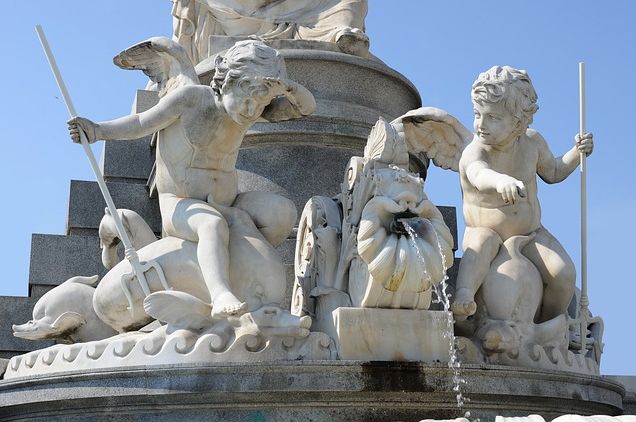
Legacy of Sculpture
Legacy of Ancient Greece
Although the art of ancient Greece still shapes the ideas of what art should look like classical Greek art itself was the product of many influences. The legacy of the cultures of the Greeks can be seen in the early statues, in the stone figures called kouroi, or youths that were common. With their rigid stature and strongly stylized in the sense of human anatomy, they show the influence of the ancient Egyptians. Thus, over the centuries Greek artists would develop their own style, which strove to capture the human body in the most realistic way possible.
The rise of the Greek states and cities and the birth of democracy in Athens saw an explosion in the arts in Greece, which entered its golden age. For the ancient Greeks capturing the functioning of the human body in art became a very important goal of life and existence. Some great paintings survive this era, with painting and sculpture being a demonstration of how Greek art developed. Likewise, the new techniques of artists who sought to represent the body in increasingly realistic ways, in action, at rest, even engaging in erotic acts, this obsession with capturing the human body profoundly influenced all the art that followed in the following centuries and millennia.
For many the high value of Greek art can be found in views of Athens. Thus, the Parthenon is one of the best known buildings in the world. Originally a temple to the goddess Athena, the Parthenon features conical columns and extraordinary, realistic sculptures, which had an enormous influence on art. Built when Athens was at the height of its power, the Parthenon became an architectural model for future civilizations that revered Greek culture from ancient Rome, to Britain at the height of the Empire, to the 19th century, and to Washington DC.
In this regard, the statue of the goddess Aphrodite in which the sculptor Praxiteles created the first statue of a naked woman of whose original statue, it is only known how she looked due to the many Roman copies that were made. Nicknamed the mother of nudes, the beauty and realistic attitude of the statue of Aphrodite has inspired artists for over 2000 years. Much imitated by later artists, Praxiteles’ vision remains the ideal of feminine beauty to this day.
Legacy of the Roman Empire
Moreover, the rise of the Roman Empire saw the Romans adopt the culture, art and traditions of the ancient Greeks. In 146 BC, the Roman victory at the Battle of Corinth indicated Rome’s dominance over the Greek world. The Roman conquerors embraced Greek art. Thus, the key features of an ancient Greek athletic statue, Polyclitus’ Doriphorus was restructured centuries later into the statue of Emperor Augustus. For the Romans the art of the Greeks far surpassed their own arts and they claimed to be their natural heirs. They also separated themselves from Greek art and all their vast Empire and left traces for future generations to discover.
In this vein, the fall of the Roman Empire saw the influence of Greek art diminish in Western Europe. However, it continued to flourish in the East. The eastern part of the Roman Empire survived the fall of Rome and became known as the Byzantine Empire. Based in Constantinople, modern Istanbul, Greek is spoken and there are still influences of Roman art with Greek inspiration. Likewise, Byzantine art, through pieces such as Barberini’s Ivory carving, continued in the Roman style and thus helped keep the artistic legacy of the Greeks alive.
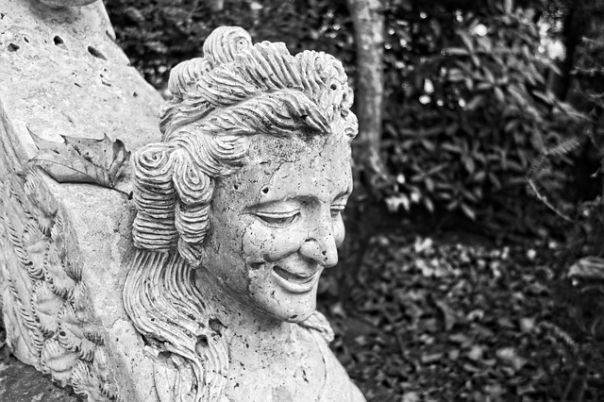
Main representatives of Sculpture
Religious wood carving was taken to new heights during the Northern Renaissance by master sculptors such as: Tilman Riemenschneider and Veit Stoss, known for their intricate work on wooden altars and statuettes, while the Baroque Counter-Reformation stimulated the supreme as examples of the Catholic Christian in sculptures of the bronze and marble form (among other things), by Gianlorenzo Bernini (1598-1680), such as the well-known Cornaro Chapel series (1645-52) including the Ecstasy of St. Teresa.
Auguste Preault (1810-79) was exceptional in adopting an uncompromisingly romantic view of his work. He emerges from occasional references in writings of the period as a bohemian, a man of sharp wit who Baudelaire recognizes as the only spirit accompanied by a chisel. Thus, writers of the period felt that sculpture was the art least equipped for the expression of Romanticism, but Preault seems to have deliberately set himself up to challenge this view by embodying his expression of intense personal emotion within the framework of relief sculpture.
For his part, Tuerie (1834) lacks a clearly defined subject and his sculpture was conceived as a fragment, yet the expression of the anguish of the victims is unprecedented in the visual arts of the century until Rodin’s bronze sculpture of the burghers of Calais. The relief of Ophelia (1843), is equally striking, was originally conceived in 1843 and for anyone who does not know much about sculpture, could well be mistaken for a production of Nouveau art, of the art of this century. One can find echoes of the sculpture of the 16th century French artist Jean Goujon, but almost none of the great classical tradition that nourished his contemporaries.
Aristide Maillol (1861-1944) rejected Rodin’s rough surfaces and worked smooth figures in stone and bronze that seem to rest in quiet repose.
On the other hand, modern secular public Art features famous sculptures such as the Statue of Liberty, Chicago’s Picasso and a series of metal figures for Chicago’s civic center and Dublin’s Spire, known as the ‘beak’, created by Ian Ritchie (sculpture architecture b.1947). Thus, contemporary public sculpture continues to challenge the traditional concepts of three-dimensional art through its new spatial concepts and its use of everyday materials in fixed-form sculptures, mounted and created in spaces and numerous installations.
Importance of Sculpture
In sculpture, some artists now use a 3D printer to create what they need for their work. As an art form, sculpture has the ability to evolve and change and over the centuries has moved from classical to abstract.
In recent years sculpture has become a much more prominent art form, thanks to a number of works by artists such as Antony Gormley (Iron Men at Crosby Beach and The Angel of the North).
Reasons for Sculpture’s increased popularity
One of the reasons sculpture has become popular again is because it is so much more appealing. Seeing a sculpture is very different from seeing a flat painting hanging on a wall.
You can walk around it, look through it, over it or into it. People are also fascinated by the way the sculpture is created. From Michelangelo’s classic statue of David to the modern art sculptures that adorn parks and gardens, a variety of materials are used that represent a wide diversity of ideas and images.
Sculptors have gone beyond using stone, wood, marble and bronze. Almost anything and everything can be used to create a work. Some artists now use a 3D printer to create figures that are considered within sculpture as true works of art.
As an art form, sculpture has the ability to evolve and change and over the centuries has gone from classical to abstract. In the 20th century there have been a number of different movements in the world of sculpture.
For example, in the early 1950s, there was a movement known as the Geometry of Fear, while in the 1960s there was the New Generation. In the 1980s there was the New British Sculpture and in the 1990s the new wave of sculptors was called Young British Artists.
For centuries man has relied on the use of sculptures
Over time, the use of sculptures evolved so that at the beginning of civilization, people used them as a representation of the gods. Ancient kings who wished to immortalize their rulers made statues in their likeness, and in doing so, led to the beginning of portrait sculpture, an art that continues to this day.
Sculptures have served many purposes for a long time, and continue to do so to this day. Thus, some of the ways in which these objects have served the various areas of life in society are:
Religion
One of the most common ways people have used sculptures in the past is in association with their religious beliefs. Long before people acquired the knowledge to read and write, the church had no means of delivering the message of hope and doom that would befall those who did not adhere to the word.
In ancient Greece, the statue of Zeus at Olympia served as a reminder of the gods. It stood at a height of forty-three meters, thanks to the creativity and hard work of Phidias. Its creation took place in 453 BC, and was composed of gold panels and ivory plates, carefully placed in a wooden frame, completing an image that spoke to people’s hearts.
Honor
Portrait sculpture emerged as leaders sought ways to symbolize their rulers in the form of statues. Kings would have their image carved in materials that they would then place in essential parts of the kingdom. An example is in Egypt, where pharaohs had representative objects that served to show their strength in comparison to that of the common man.
Anti-sculpture movements
Sculpture is now recognized as a form of representation that people not only use for religious purposes but also as a means of honoring people in society.
People sometimes refer to anti-sculpture movements as Aniconism, which is the lack of material symbols of both the natural and supernatural world. This movement was particularly prevalent in religions where there is a belief in one God.
The lack of representation can extend from the higher power to anything else that exists including humans and animals. This belief stems from religious traditions, and therefore the use of any representation is qualified as taboo and therefore not allowed.
When this movement is underway and works together with the destruction of anything taboo, it is called Iconoclasm, which is a Greek word related to the non-acceptance of images.
Religions in which only one God is believed in
In these religions the use of sculptures is not allowed. According to the historical contexts, the use of figures competed with the unique status that God had in the religion. Therefore, law enforcers had to make sure that critical humans, as well as pagan idols, did not compete with God for status.
Idol worship was a threat to the monotheistic nature of religions and law enforcers, which included missionaries and prophets, fought against the existence of sculptures by banishing their use.
Their beliefs coincided with what led to the banishment of humans from the Heavens when they attempted to build the tower of Babel, and that humans did not have the same powers of creation as God, and therefore the use of sculptures was wrong.
Buddhism
Buddhists avoided the use of sculptures to represent the Buddha. Thus, they chose to have symbols of an empty throne, his footprints, a Bodhi tree and a prayer wheel. Although their depictions often featured human beings, they had nothing to symbolize the Buddha.
This movement was in accordance with the Buddha’s wishes, where he discouraged the use of symbols after the extinction of his body. However, this later changed, and many people think it is the result of Greco-Buddhist interactions. Towards the end of the 20th century, an art historian came out to challenge the theories behind the beliefs, which to this day remains a debate.
Islam
This religion forbids idol worship. There is a dependence on the materials used, which is why, in many fundamentalist Sunni sects, one finds that there is a movement towards non-acceptance of sculptures.
Hinduism
Many people relate anti-sculpture to the Abrahamic religions. However, there are some shared ideas behind these religions and Hinduism, as their believers follow aniconism. Therefore, the symbols used to represent their God are often abstract, and believers find it easy to focus on icons.
Christianity
There were many instances where believers destroyed sculptures that they considered a threat to the status of God. These destructions took place mainly during two periods. During the 8th and 9th centuries, the councils of the Orthodox Church, the Catholic Church, the Pope and the Byzantine Emperors had a complicated relationship where the idea of iconoclasm came into the picture.
Judaism
Aniconism was present in Judaism until the 19th century, when they embraced the use of sculptures.
